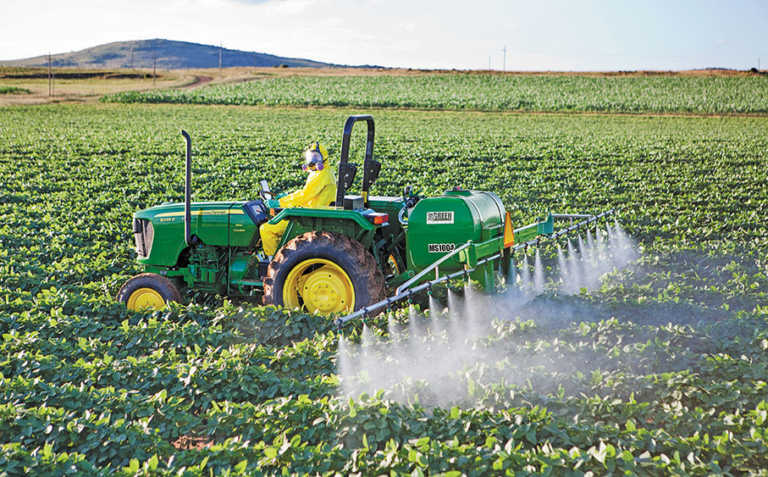
While the concept of genetic modification has been around since the 1980s, many people around the world have either not heard of it or have a poor understanding of the principles, processes and goals behind it.
Genetically modified organisms (GMOs) are organisms that have been modified in a manner that does not occur naturally, through hybridisation, breeding, or natural genetic recombination.
This genetic modification takes place in high-tech laboratories and requires many years of research and development before an acceptable GMO is developed for commercial application.
“In genetic modification, a beneficial gene is taken from one organism, such as a bacterium, and placed into the genetic code of another organism, such as a plant, to achieve a desired trait in the recipient organism,” explains Dr Hennie Groenewald, executive manager of Biosafety South Africa.
“Genetically modified crops grown commercially around the world include maize, soya beans, cotton and, more recently, sugar cane.”
The first generation
Despite the successful commercial use of GMOs around the world over the past 20 years, there are still anti-GMO lobby groups. According to Groenewald, the concerns of these groups are addressed in the detailed reports of a multitude of governmental regulatory agencies, independent scientific organisations, and leading health associations around the world.
While many people have concerns about the food they consume being derived from GMOs, they seem to accept the fact that recombinant DNA (rDNA) technology is utilised to manufacture a number of medicines, including vaccines, which they use in their everyday lives.
“For example, the insulin taken by diabetes sufferers used to be harvested from the pancreases of pigs and cows. Now it’s produced in fermentation tanks from bacteria that contain the human insulin protein. This is rDNA, or GMO, insulin,” says Groenewald.
While the breeding and use of conventional crop plants has been practised successfully for thousands of years, these crops have been constrained by yield limits and susceptibility to pests and diseases.
In addition, conventional crops have traits that cannot be transferred between them through conventional methods.
The development and use of the first generations of GM crops were motivated primarily by a need to increase yield, reduce crop losses to pests and diseases, and decrease agrochemical use.
For example, GM crops that are tolerant of glyphosate-based herbicides make it far easier for farmers to manage competing weeds on their lands.
GM crops in South Africa
“The first GM crops were planted in South Africa in 1997, and GM crop technology has expanded and been successful in our country since then,” says Groenewald.
“The development and use of GM crops have made significant, positive contributions towards sustainability in agriculture around the world. Research has found that they’ve increased crop productivity, which in turn has increased food, fibre and feed security. This has resulted in lower production costs, leading to more affordable food.”
environmental benefits
It is also claimed that by increasing productivity on the world’s 1,5 billion hectares of arable land, GM crops have reduced pressure on the natural environment, thereby helping to conserve biodiversity.
The International Service for the Acquisition of Agri‐biotech Applications (ISAAA) states that GM crops help lower agriculture’s eco-footprint and contribution to climate change.
This is achieved through reducing the quantity and range of agrochemical applications, and by the fact that GMOs outcompete weeds that utilise soil moisture.
Lower tractor fuel requirements are another factor. Research has established that the reduction in the sector’s fuel usage, and hence the cut in carbon dioxide emissions, is equivalent to removing 12 million cars from the world’s roads every year.
ISAAA has also established that the improved resilience and productivity of GM crops help to alleviate poverty and hunger by ensuring that growers generate greater incomes.
“The traits currently and commonly introduced to GM crops are tolerance to herbicides and resistance to insect pests, or a combination of the two, which is referred to as a stacked gene crop variety,” explains Groenewald.
“GM crops have been adopted rapidly since their commercialisation. In 2016, 18 million farmers in 26 countries planted a total of 185,1 million hectares of GM crops, and this number [continues to grow].”
While not all are commercially available yet, a wide variety of GM crops are being planted or developed. By far the most popular are maize, cotton, canola and soya bean GM crops. Niche GMO crops include carnations, potatoes, tomatoes, rice, sugar beet and lucerne.
GM crops trigger economic growth
The US is currently the largest grower of GM crops in the world, planting 40% of the global hectarage. Among the world’s developing countries, Brazil grows the most. Since 1996, farmers worldwide have planted 1,8 billion hectares to GM crops.
According to ISAAA, South Africa, which plants GM maize, cotton and soya beans, has the ninth-largest area – 2,7 million hectares – planted to GM crops. GMO use in this country is governed by the Genetically Modified Organisms Act No. 15 of 1997, and the country is a signatory of the international Cartagena Protocol on Biosafety, which aims to ensure the safe handling, transportation and use of living modified organisms resulting from biotechnology.
In June this year, specialist agricultural consultants, PG Economics, released a report on the findings of research into the socio-economic and environmental impact of GM crops. According to these, GM crops have stimulated economic growth in the 26 countries where the technology is used.
“Over the past 20 years, where farmers have been given access to, and the choice of, growing GM crops, they have consistently adopted the technology, contributing to a more sustainable food supply and a better environment where they live,” Graham Brookes, director of PG Economics and co-author of the report, said in a statement.
The study also revealed that GM technology has increased farm income by enhancing productivity and efficiency. It was estimated that in 2015, GM crops boosted global farming income by US$15,4 billion (about R199 billion).
In South Africa, the economic gain from GM crops between 1998 and 2015 was about US$2,1 billion (R27 billion). In 2015 alone, this figure was about US$237 million (R3 billion).
Second-generation GM crops
According to Groenewald, scientists worldwide are conducting research into second-generation GM crops and other products that will offer improved nutritional, and other benefits, for consumers.
For example, the Innate potato variety has late blight resistance and a low acrylamide content, which could potentially reduce carcinogens in fried potatoes. Other promising developments are the non-browning Arctic apple variety, vitamin A-rich golden rice, and even water- efficient maize for Africa.
Research is also being undertaken into genetically modifying certain animal species, such as sterilising the malaria-carrying mosquito, and developing the AquAdvantage GM salmon variety, which would dramatically speed up the growth of farmed Atlantic salmon. The latter recently received approval for commercial use in the US and Canada.
Dispelling the myths
“Many people are uncertain about the safety of consuming GM foods or meat from animals fed with GM feed,” says Groenewald.
“They need to understand that GMOs are subjected to stringent health and safety research and controls to ensure that they cause no harm to consumers. However, in at least 64 countries, including South Africa, labelling is required on food products to indicate whether they contain GM products. This gives the consumers the choice of whether or not they want to consume these foods. The great majority of people are not concerned about consuming GM products, basically because they’re not even aware of any controversy.”
While South Africa has yet to develop its own GM crop, rather than using technologies developed elsewhere in the world, the South African Sugarcane Research Institute (SASRI) has been conducting extensive research into developing a GM sugar cane variety of its own.
However, Dr Sandy Snyman, SASRI’s principal biotechnology scientist, says that due to stringent legislative requirements, it would take at least 10 years from now before such a variety could be released commercially.
Phone Dr Hennie Groenewald on 021 850 0530, email [email protected], or visit biosafety.org.za.












